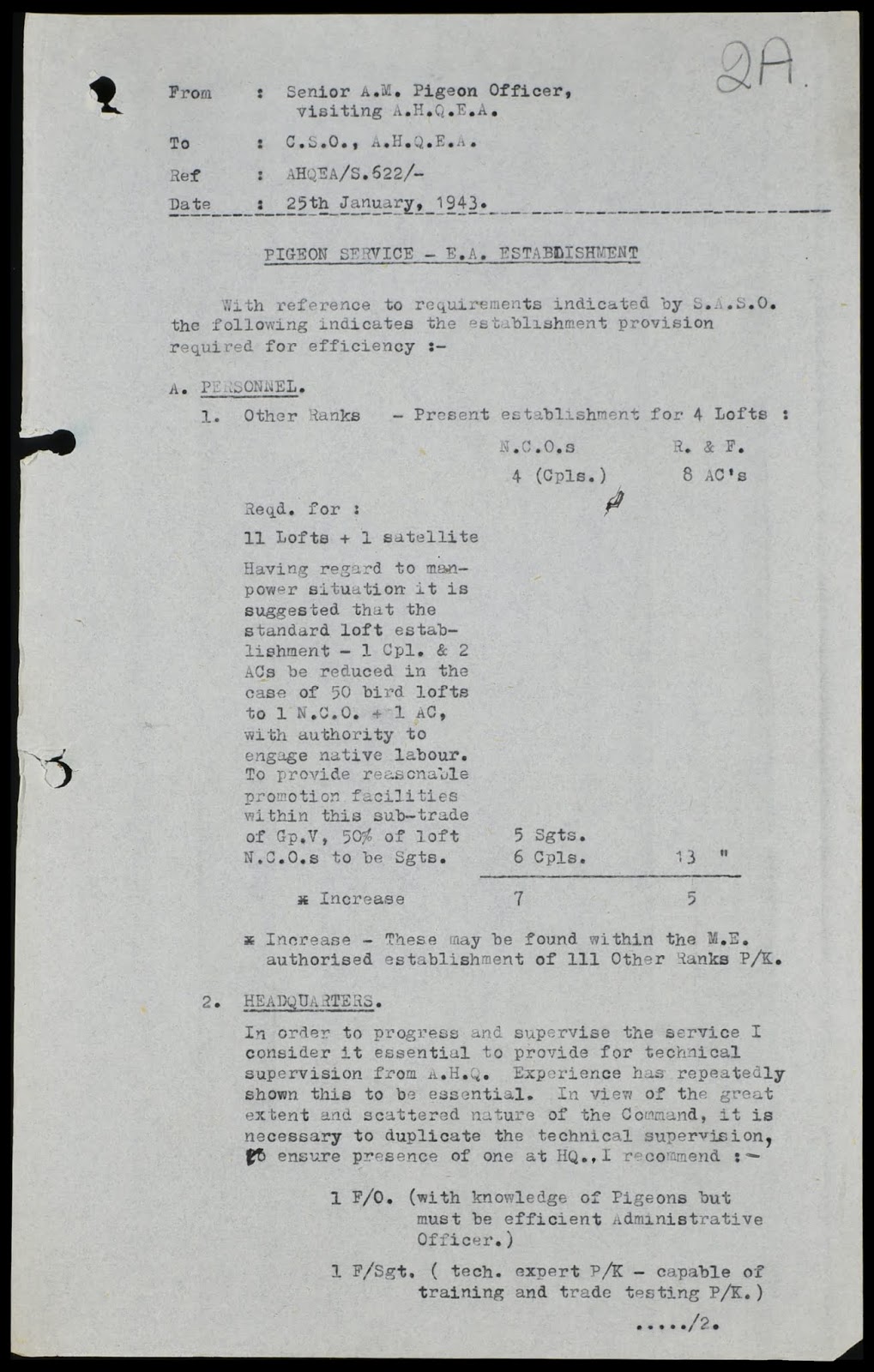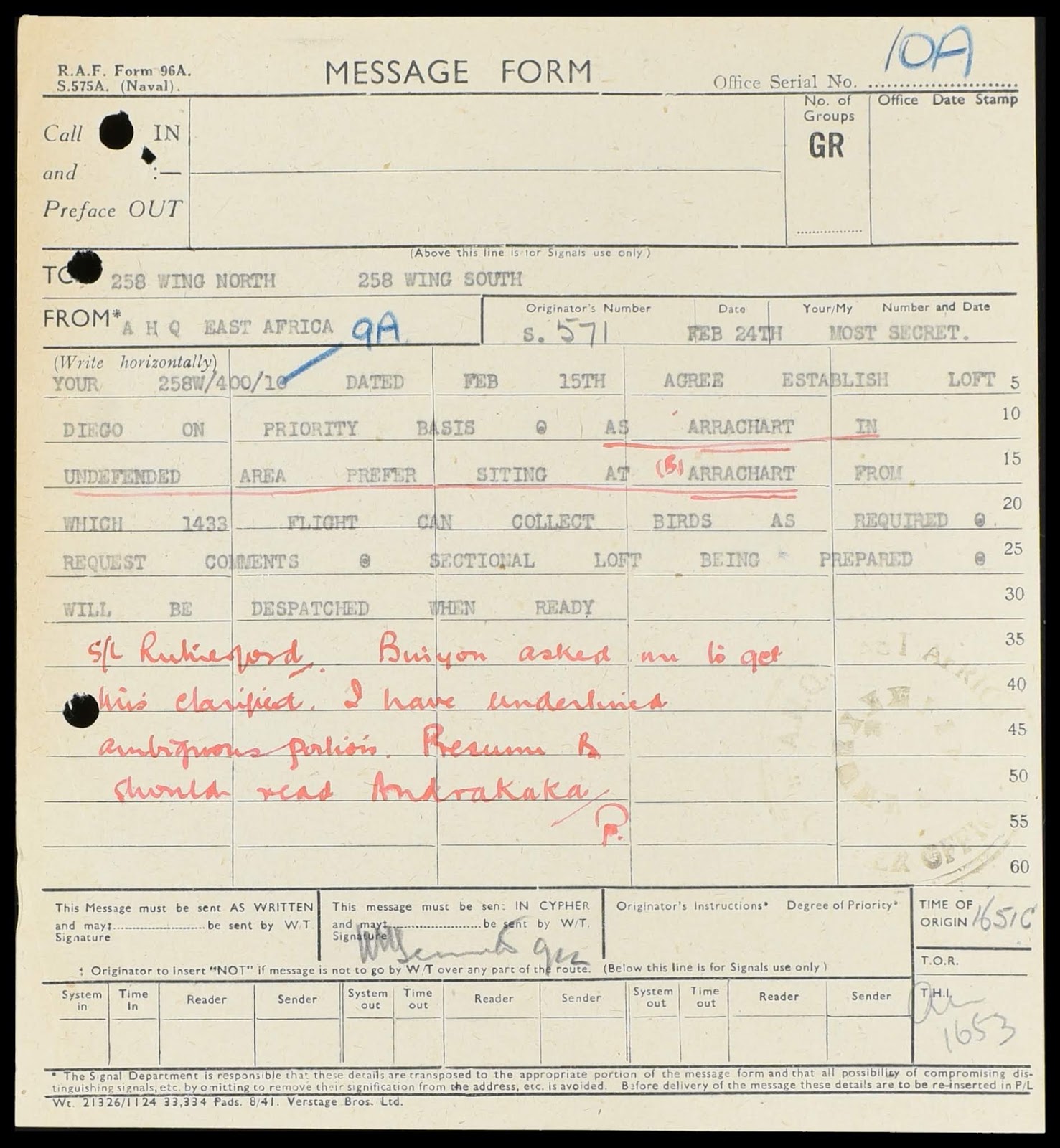Excerpt from “Loft Manager
and Pigeons,” by Bert Braspenning, Holland, in Racing Pigeon Digest, October 15, 2019:
“When the last middle distance races start
you can see the number of participating pigeons run back quickly. This is because many fanciers who no longer
have a chance at a championship will focus on the young pigeon game….A lot is
being demanded of the young pigeons while they have to work in the toughest
period of the season. Often very hot and
that is not an easy task for not well-trained youngsters. This year and last year the juniors have a
very difficult time.
Still I look forward with interest to the
remaining races. The young pigeons are
increasingly forming pairs, are cuddling somewhere in corners. Others already have eggs and a couple gave
birth to the first youngster two days ago.”
(c) Crown copyright images reproduced by courtesy of The
National Archives, Kew, UK
Catalog number: AIR23/998
#89





















































